The Reliefs
The reliefs of the Monument to King Tomislav and everything that went on around them during its making, and later, are a story to itself, one that deserves particular attention.
The initial idea of the Committee for the Erection of a Monument to King Tomislav was that on one of the reliefs there should be a depiction of the coronation of the king, and on the other, of the Split Church Council, but in 1930 this idea was in part abandoned and it was decided that the church council should be replaced by a Reconciliation. The peace brokered by King Tomislav between Serbian Prince Zacharias with the Bulgarian Emperor Peter would symbolise the respect due to and the importance of Tomislav in these areas: the king of Croatia attempting to bring about peace in the Balkans.

Plaster model for the relief Reconciliation,Robert Frangeš Mihanović, 1928 - 1938
Frangeš Mihanović finished the relief panels in 1938, and in the same year the artist donated the original plaster models for the two reliefs to the Gliptoteka. They are done in high relief, in broad, soft and rounded planes, without too much detail, in a manner similar to that used in the equestrian figure. In the relief Reconciliation Tomislav is given the central position, turned face-on to the viewer. He holds by the hand Serbian Prince Zacharias and Bulgarian King Peter who, with their retinues, are shown in profile. The scene is highly suggestive of Tomislav’s stability and dignity, emphasising the strength of the then most distinguished ruler in the Balkans.
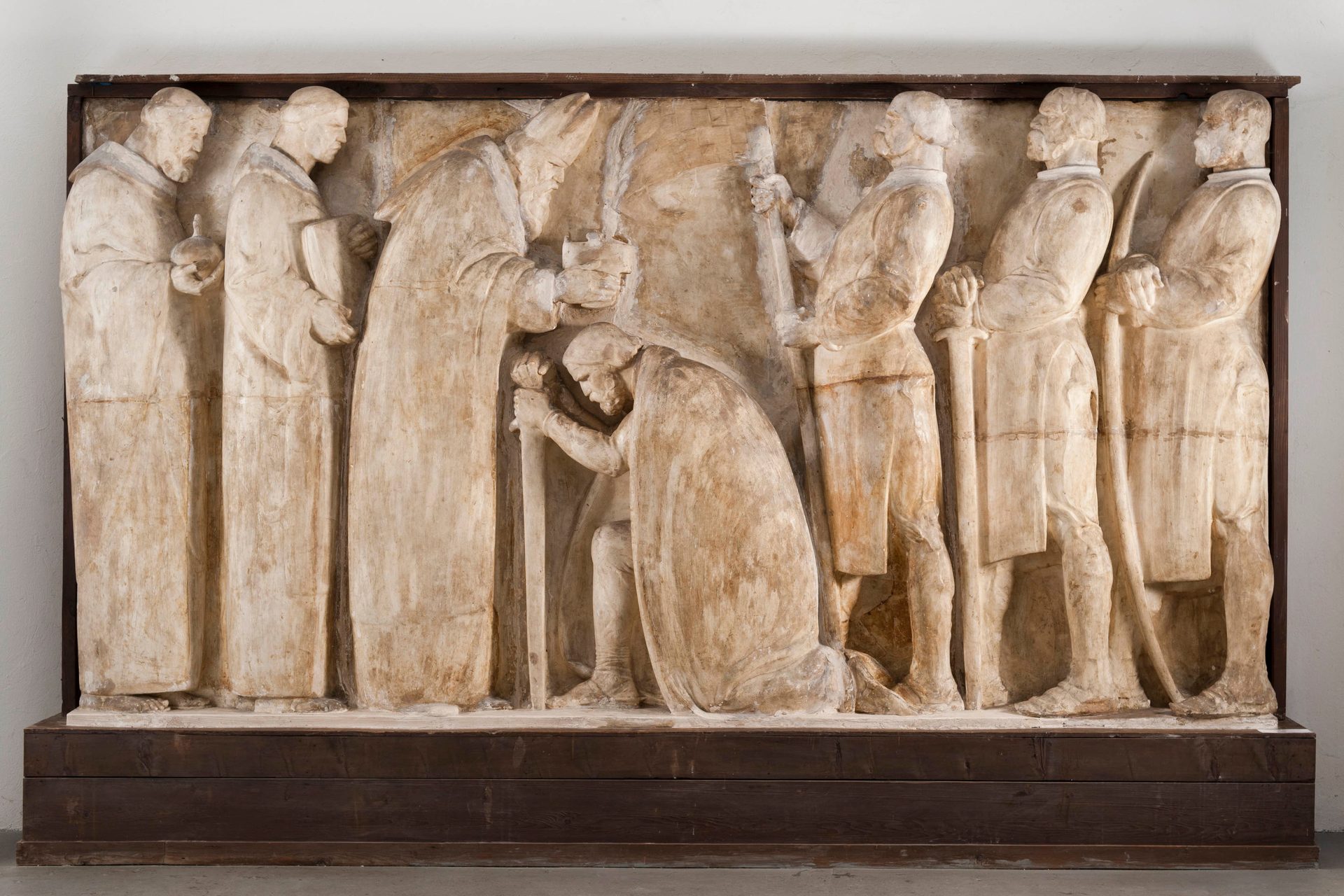
Plaster model for the relief Coronation, Robert Frangeš Mihanović, 1928-1938
The other relief depicts the Coronation of Tomislav. The figure of the king here too is in the centre of the composition, in profile, clad in a cloak and kneeling, leaning on a sword. To his left is a mitred priest, putting the crown on his head; behind him stand two male figures. They too are clerics, the first holding the Gospels in his hand, and the other the royal symbols of orb and cross. On the right hand side of the composition are two more warrior figures, holding in their hands flag, sword and bow, symbols of the power possessed by Tomislav.
Rhe relief of the Coronation was placed on the western side of the empty plinth in 1941 and remained there right until the monument was put in position. The Reconciliation relief was not put in place then because in the opinion of the authorities of the time it was too much in the spirit of Bishop Strossmayer.
At the moment when the equestrian figure was finally installed, in 1947, Frangeš’s depiction of the Coronation fell out of favour, politically speaking, and in the October of the same year a competition was announced for the making of new reliefs for the Tomislav monument. The theme of the Coronation would be replaced by “Tomislav’s Navy”; announced in October 1947, it attracted entries from the sculptors Ivan Sabolić, Želimir Janeš, Velibor Mačukatin, Vjekoslav Rukljač and a few others, whose names were not published. The first prize went jointly to Ivan Sabolić and Želimir Janeš, who did actually make new reliefs. Janeš got the job of making a new scene of the reconciliation of the rulers of Serbia and Bulgaria, while Sabolić was to set the scene of the Navy of King Tomislav. Velibor Mačukatin and Vjekoslav Rukljač won second and third prizes. The plaster sketches of the works of the participants are kept in the Croatian Academy of Sciences and Arts Glyptotheque and on this occasion are being shown to the public for the first time. Of the sketches on show, versions of the Navy have been attributed to Ruklač and Sabolić and Reconciliation to Mačukatin, the authors of the other sketches being unknown.
In a contract for the making of a relief that Sabolić signed in 1948 it was said that the artist should move the figures that had been pushed too much into the corner towards the centre, to get a logical connection with the rest of the relief, with the result that the reliefs actually executed differ in terms of composition from the original sketches. The jury also had criticisms of Janeš’s Reconciliation, and imposed on the artist the task of condensing the right hand side of the relief for the central depiction to obtain a distance.
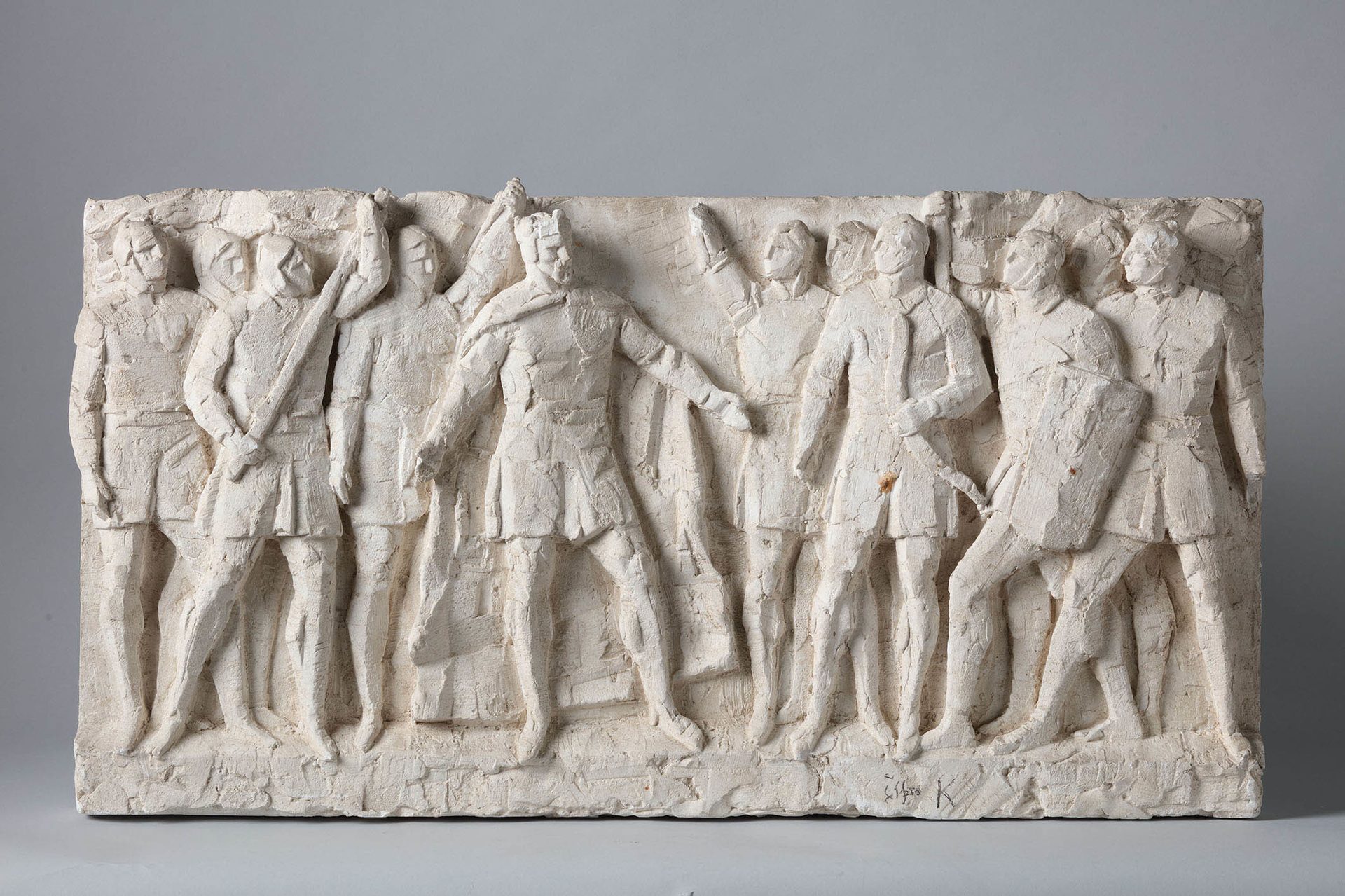
Sketch for the relief Reconciliation,unidentified artist, 1947.
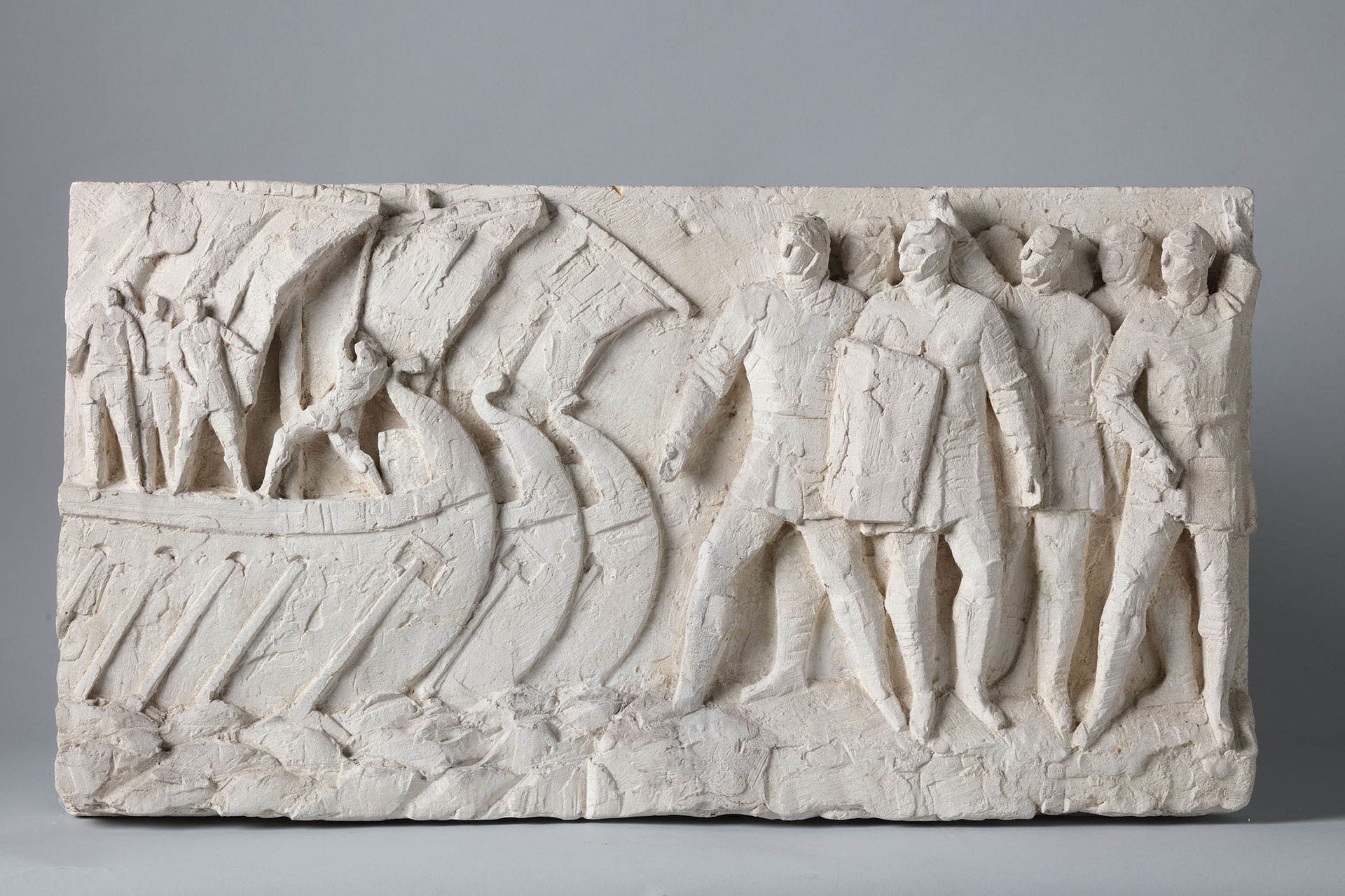
Sketch for the relief The Navy, V. Rukljač, 1947.
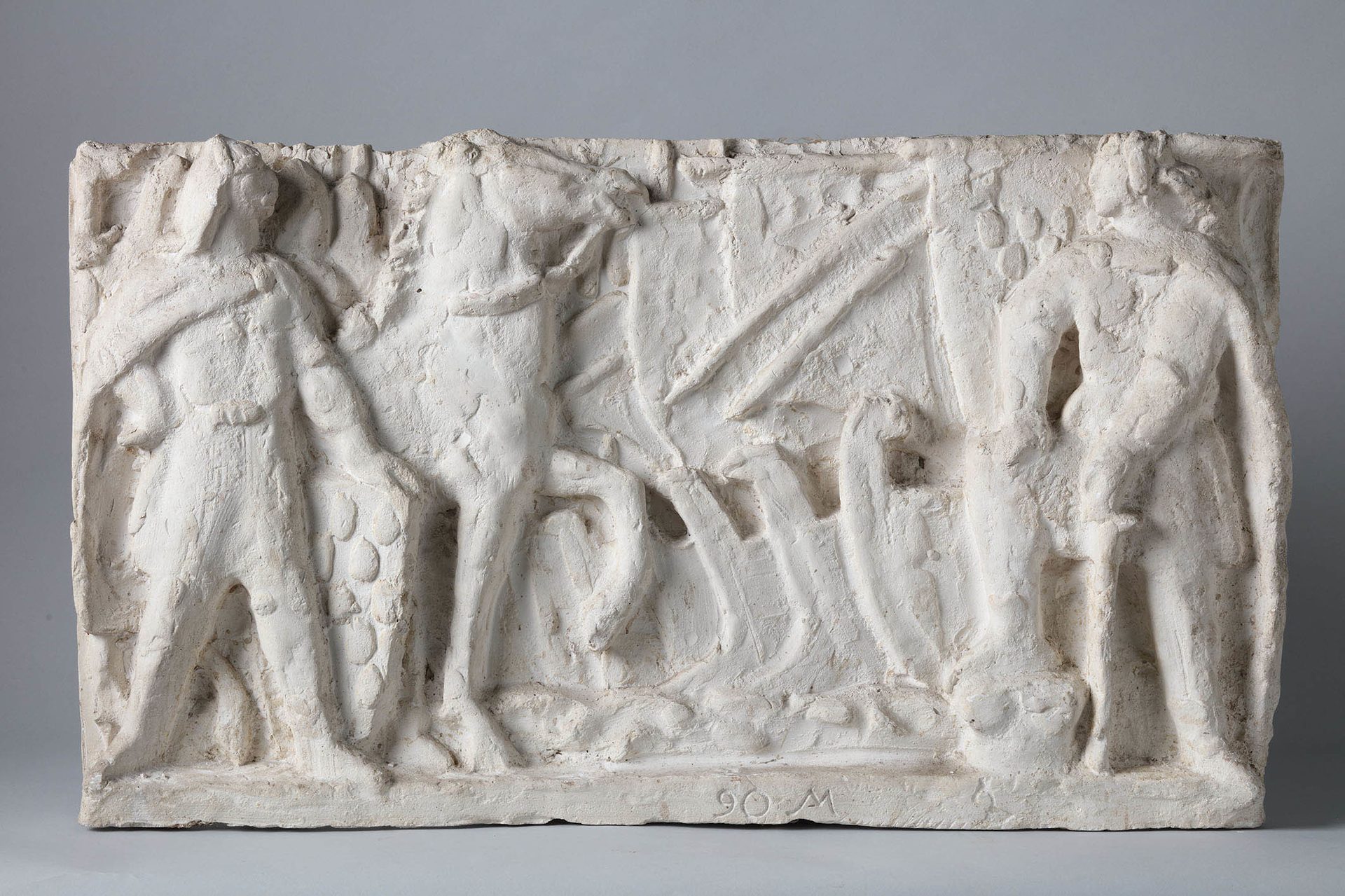
Sketch for the relief The Navy, unidentified artist, 1947.
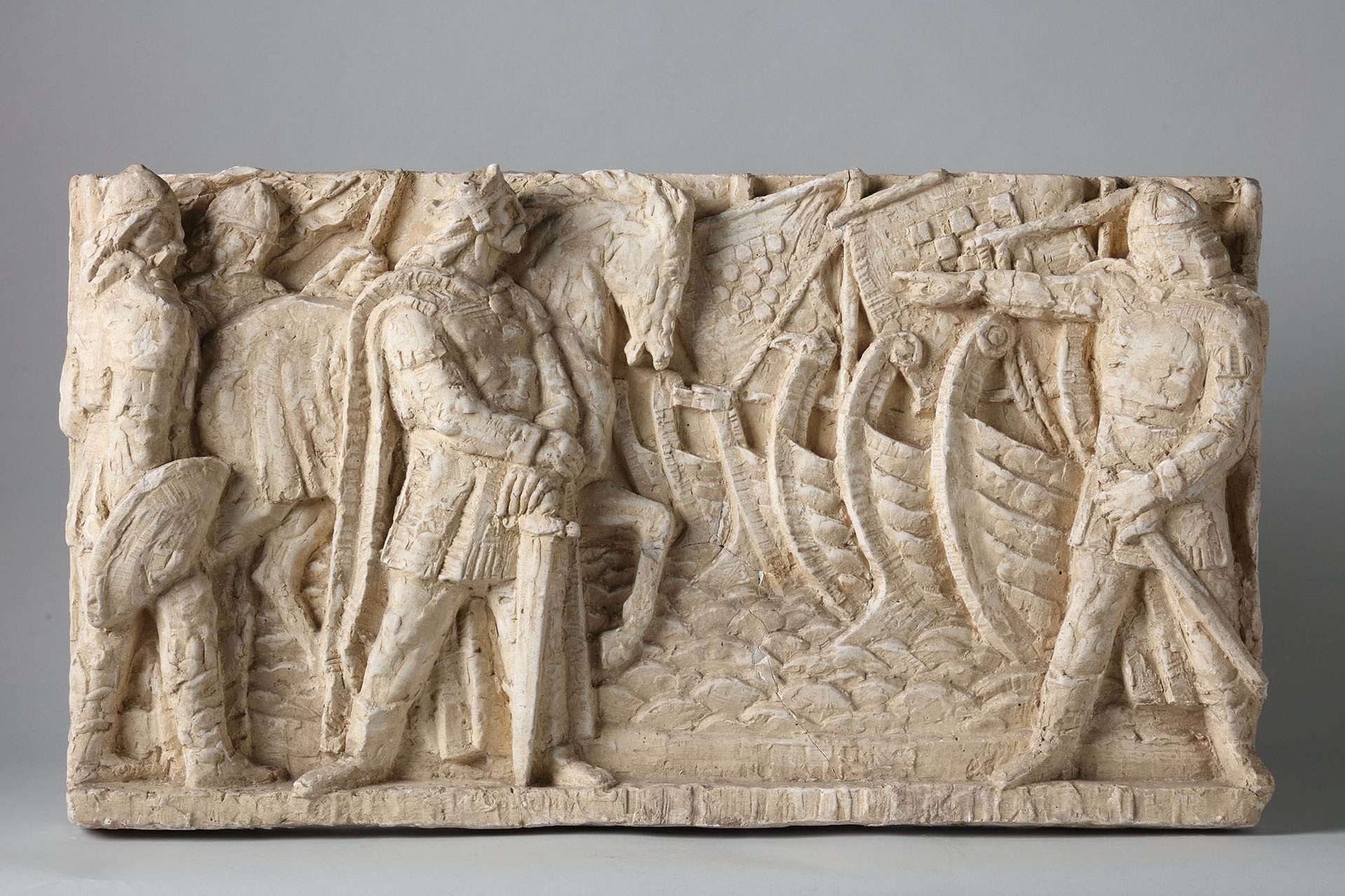
Sketch for the relief The Navy, I. Sabolić, 1947.
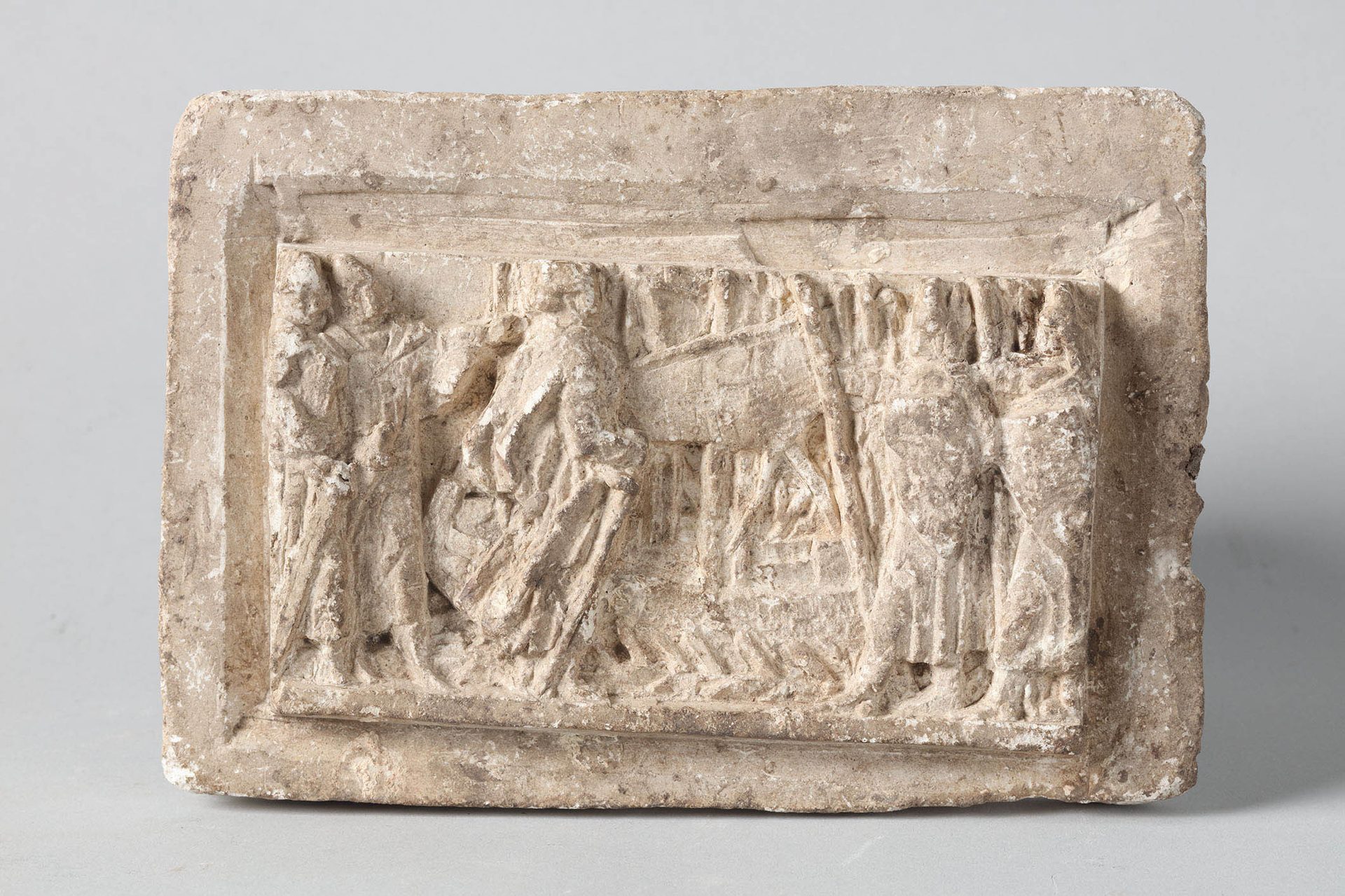
Sketch for the relief The Navy, unidentified artist, 1947.
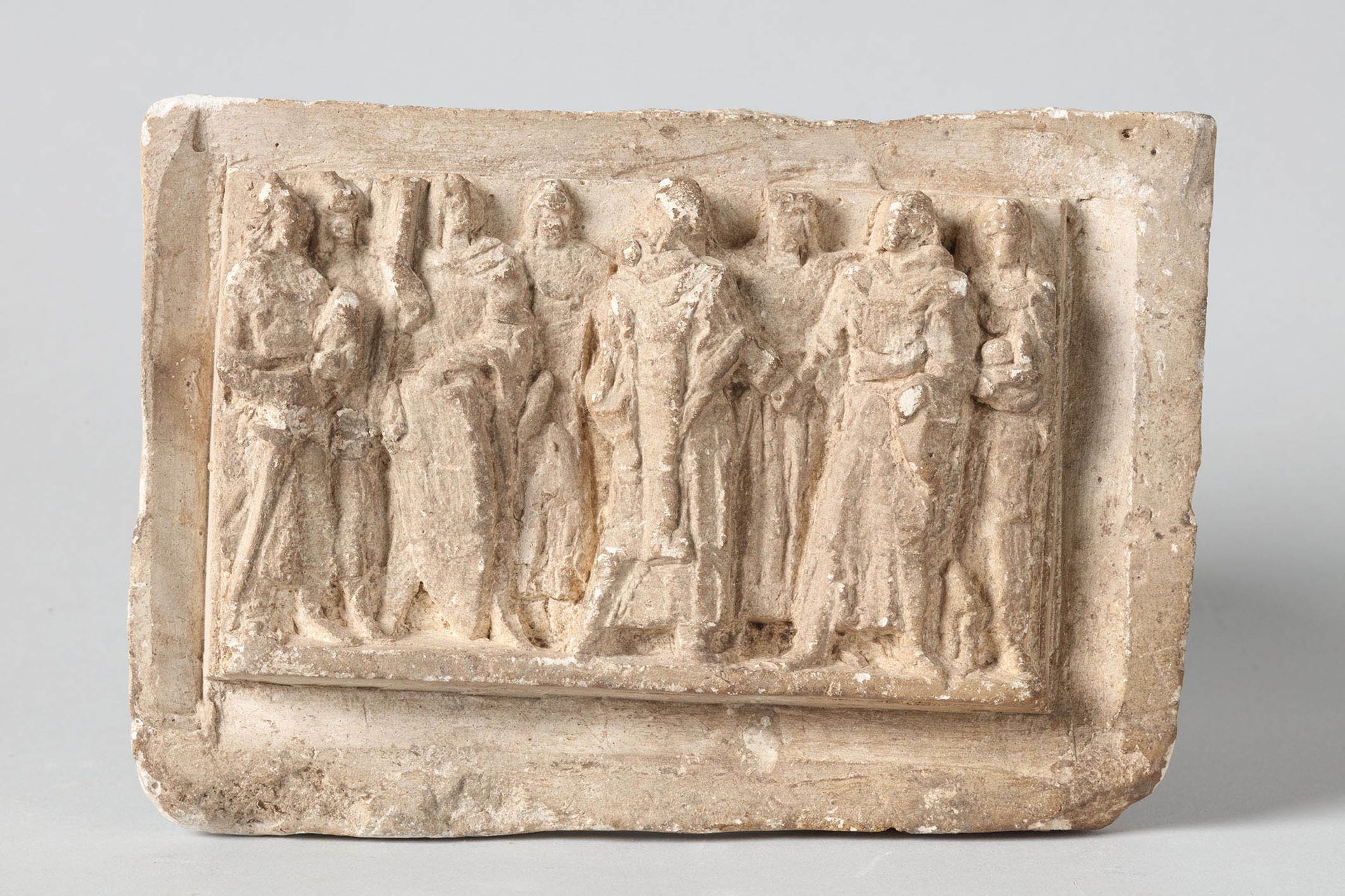
Sketch for the relief Reconciliation, unidentified artist, 1947.

Sketch for the relief Reconciliation, V. Mačukatin, 1947
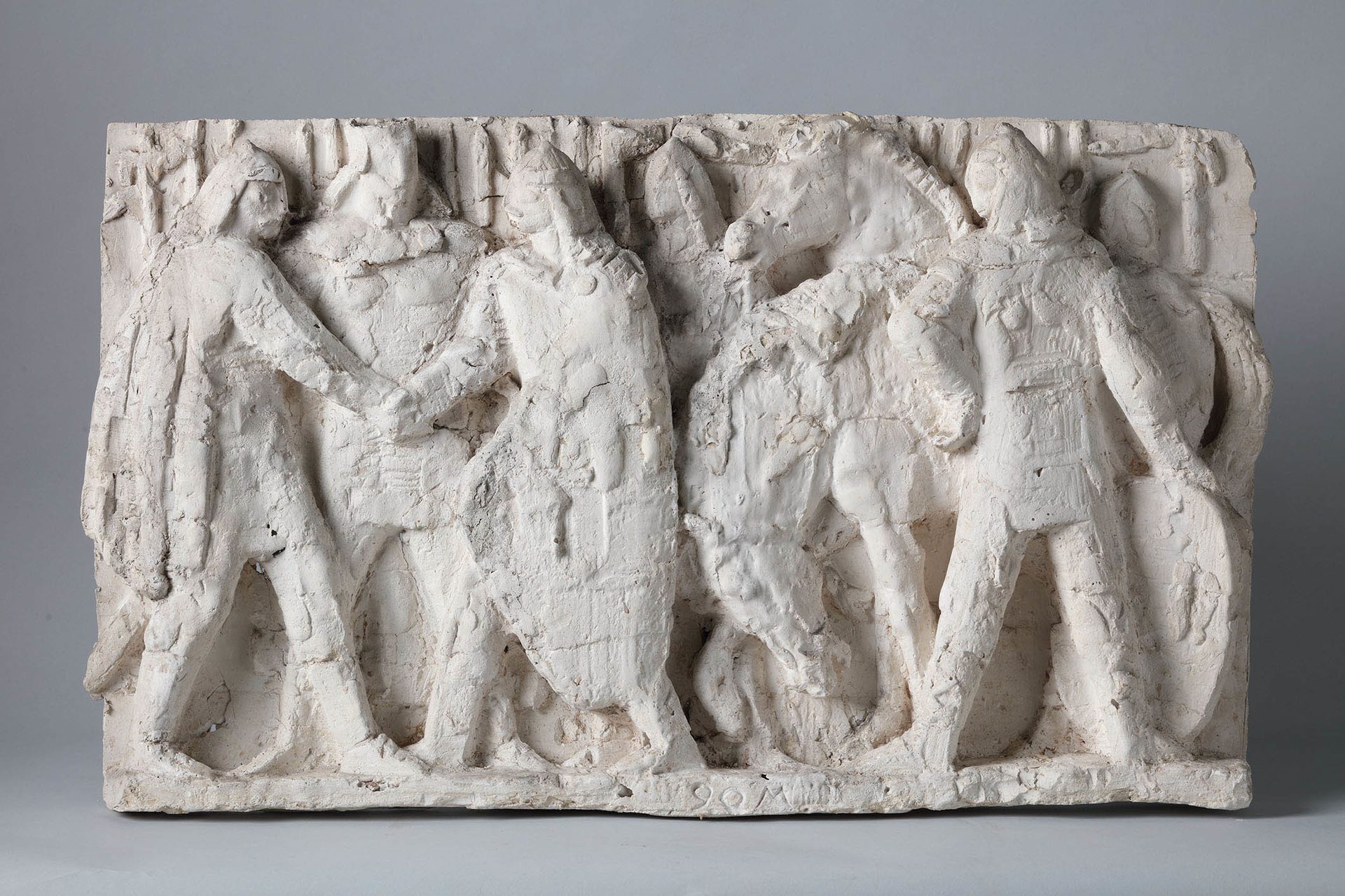
Sketch for the relief Reconciliation unidentified artist, 1947
The new reliefs differ from the Frangeš originals not only in theme but also formally. The reliefs of Janeš and Sabolić are much more dynamic, with greater detailing, in several planes. In the relief of the Navy, the Tomislav figure with his sword at the waist constitutes the foreground, while in the middle ground next to him on left and right are armed soldiers, the ships being discerned in the background. In Janeš’s Reconciliation the centre of the composition consists of Tomislav with Serbian Prince Zacharias on his left and the Bulgarian emperor. The warring rulers are done in high relief, in the foreground, offering each other their hands, the Croatian king being placed in the background. Each of the rulers has two soldiers in his train at the side.
For both Sabolić and Janeš these were among the earliest large executed works after they had graduated from the Academy of Fine Arts in Zagreb, where they had been taught by Antun Augustinčić. The realism in the depiction of the faces and the drapery, the prominent narrative element and the alternation of planes of high and bas relief are what make the new reliefs a departure from those of Frangeš Mihanović, and can be attributed to the influence of Augustinčić.
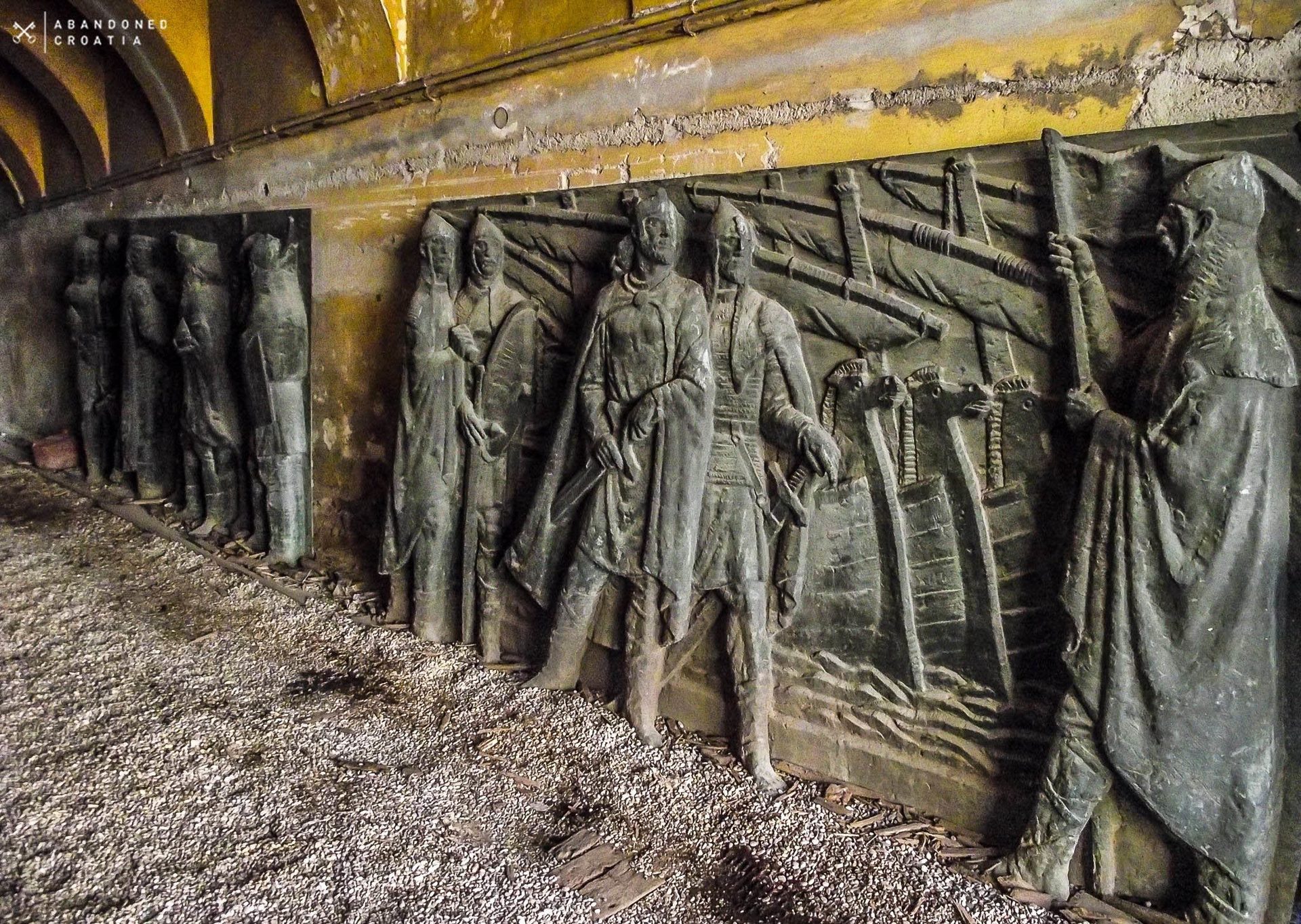
Reliefs of Ivan Sabolić and Želimir Janeš in the passage of the courtyard of the Grlečić-Jelačić Palace, 2013
Without disputing their artistic value of the new reliefs, there is still no doubt that the Frangeš Mihanović originals are in their form more suitable for the equestrian figure on the plinth, although both of the new compositions give off a sense of the idealised and heroic atmosphere that is necessary for this kind of monument.
When the state of Croatia was established in 1991 the Frangeš originals were restored to the monument. Bronze reliefs were cast from the plaster models kept in the Glyptotheque and together with the Croatian coat of arms were placed on the monument in 1991. The Janeš and Sabolić reliefs were removed and placed in the courtyard of the Grlečić-Jelačić Palace in the Upper Town, where they are today. In the media there have been several references to their being inappropriately housed and so deteriorating. The Glyptotheque has been mentioned as a place where they might be kept, but to date they have not been moved.